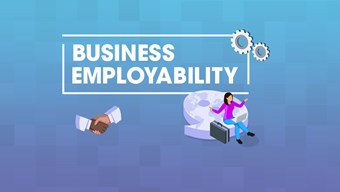You can see the impact of technology in businesses at all levels, from the kitchen to the boardroom and everywhere in between. Of all places though, perhaps the most ideally positioned to implement changes is the Human Resources (HR) department. It’s a great proving ground to make use of the latest innovations in workplace technology, or organisational psychology. Below, we look at some of the most effective and regularly seen improvements companies are using.
By Editorial Team. Published 06 December 2018. Last updated 25 May 2023.
Flexibility
In a booming job market, employees know that if they don’t feel comfortable they can find employment elsewhere, so it’s important to create a working environment that encourages employees to stick around. Unfortunately, the creation of an encouraging workspace extends to more than just putting a foosball table in the corner.
Flexibility is a common favourite amongst the workforce, though this can mean different things to different people. Open-plan spaces and ‘hot-desking’ environments may suit extroverts who thrive off the buzz of a busy workspace, but more serene and secluded environments are more likely to attract introverts. In an ideal situation, an organisation will be able to accommodate a variety of workspace preferences, allowing employees to position themselves to their best advantage. Fortunately, tech is a great help in these areas. Remote working, laptops and cloud systems are all great examples of how companies can make easy improvements to their employees’ environment.
Personal development and well-being
With current technology being more affordable and readily available than ever before, many organisations can offer employees greater ongoing support to improve themselves. Staff are always grateful for any effort made to benefit them, and it can provide a significant return on investment by using their new skills to great effect in the workplace.
Personal wellbeing is a hot topic at the moment. The availability of personal support and wellness tracking is now pretty high on the list of desirable offerings from employers. The extent to which companies can nurture talent, and encourage that talent to stick around, has developed vastly in recent years. One of the most celebrated concepts is that of “20% time”. This allows employees to use a portion of their day to shift focus from their typical daily duties to other beneficial activities, such as self-directed learning, to promote innovation.
Finding balance
To succeed across the board, organisations should strive to find a balance between three key areas: the goals of the organisation, the demands of the marketplace and the individual needs of the employee. They are each reliant on the others, so it is important to clearly define their roles within the triangle.
Treating employees as consumers is an ‘agile’ recruitment method which ties together typical benefits, like a gym membership or free lunches, with personalisation techniques, which can include recommending training and development in line with their interests and skills. That can be anything from personalised recommendations for conferences or tradeshows to the latest apps facilitating self-directed learning, companies are helping themselves by helping you.
Performance 360
New tech enables continuous feedback between employees and managers, which tracks progress, provides insight, and facilitates regular support and coaching as required. Some larger corporations are substituting more broad-scale structural reviews for individualised feedback, tailored to each employee.
Focusing more on employee wellbeing and engagement, aided by the new technologies at their disposal, companies can predict, measure, and record the performance of employees with more accuracy, and use this information to greater effect moving forward.
New starters and internal movers
Technology in the field of HR can manage the entire new starter process seamlessly – from handling the tedious paperwork to making new introductions between co-workers – so your fresh talent won’t need to feel like the new kid in class.
But what about when existing employees change roles, locations, or responsibilities within the organisation? This is where companies are realising a similar approach is needed to prevent their staff from feeling isolated, and better equipped to handle the change. This is where we anticipate the next steps of HR tech will be made.
If you’re interested in developing your skills in HR, check out our MSc in Leadership and Human Resource Management.



